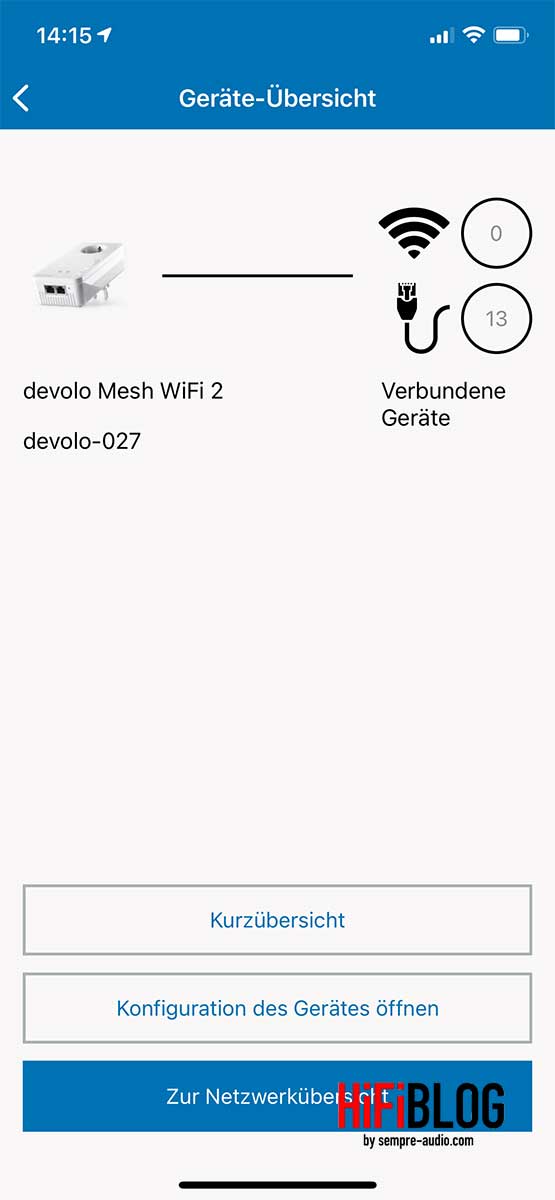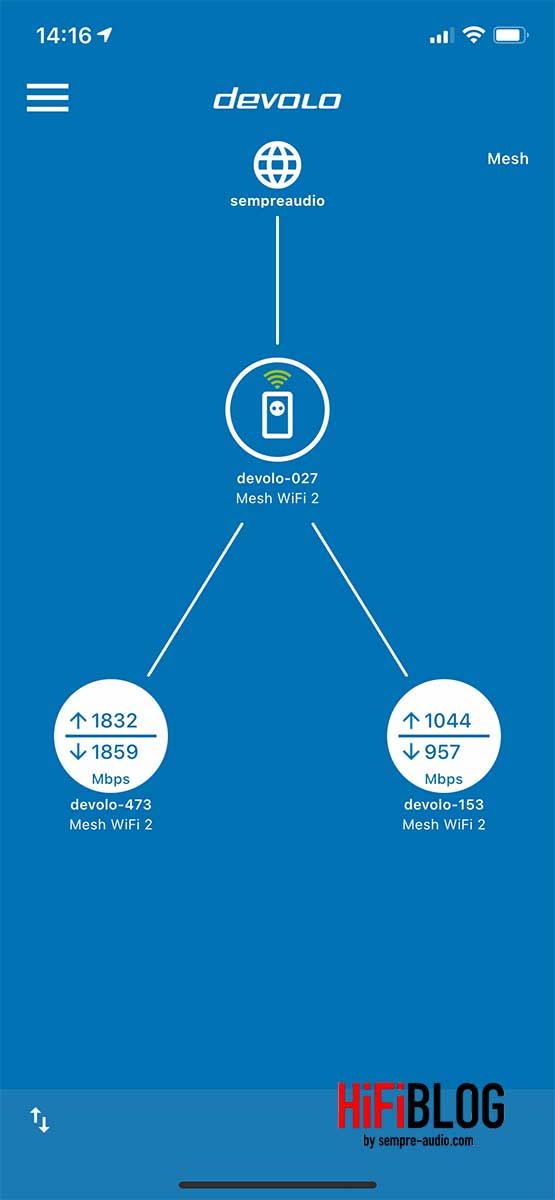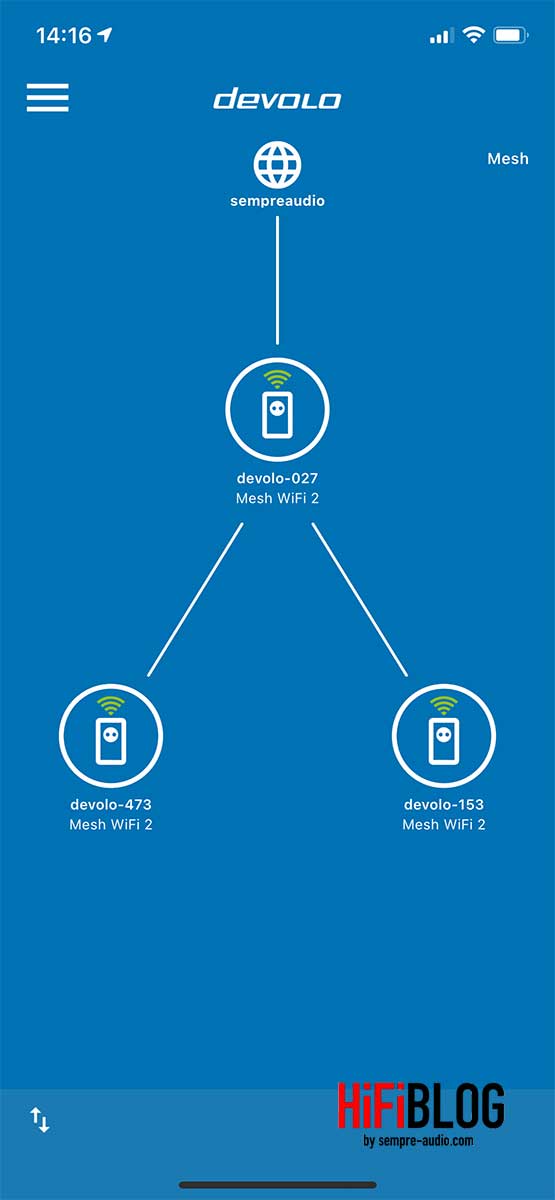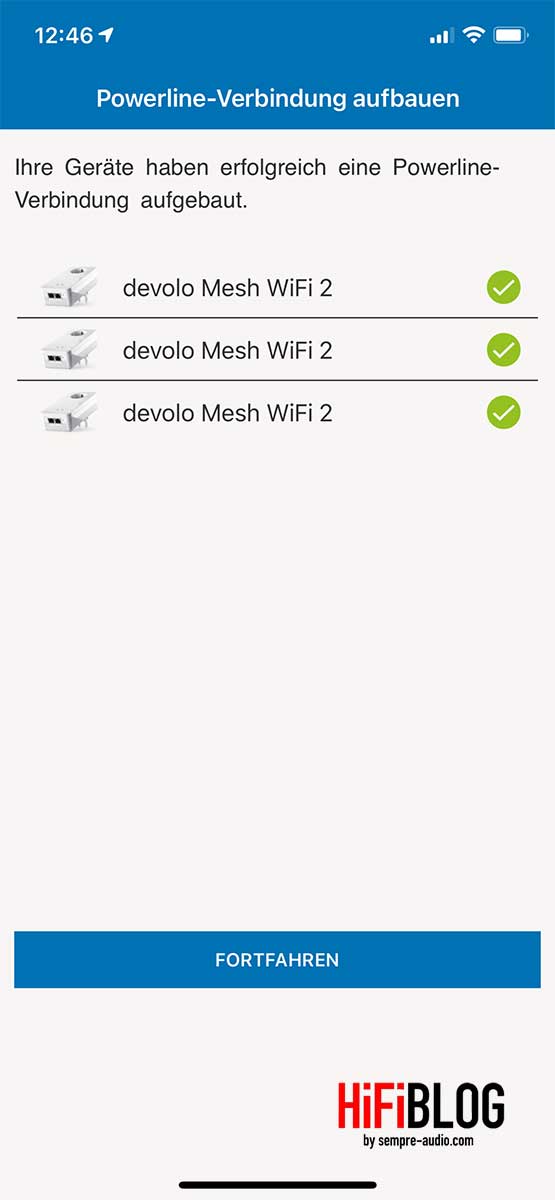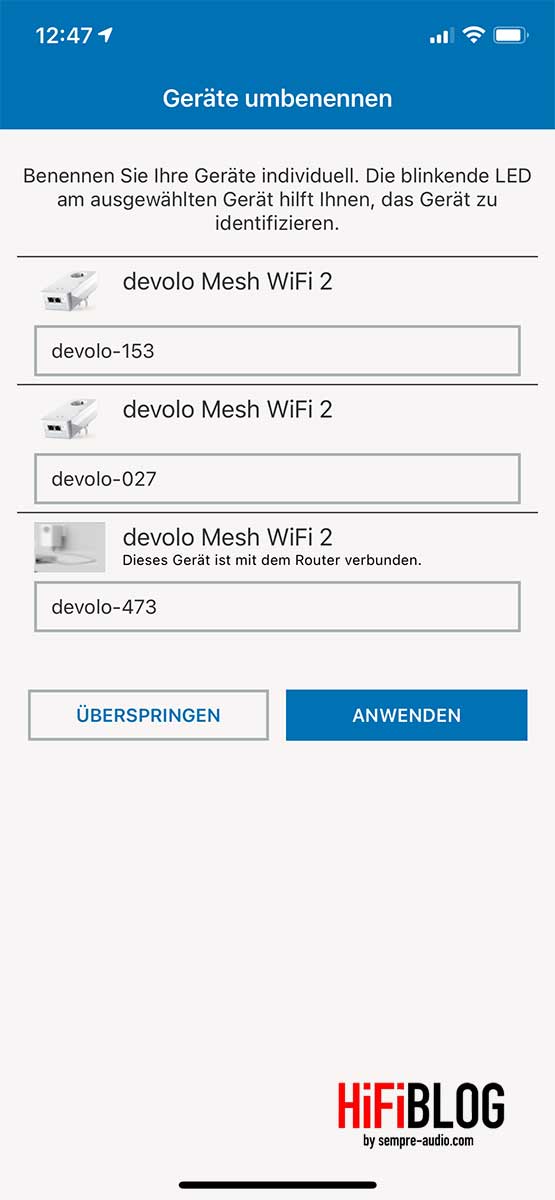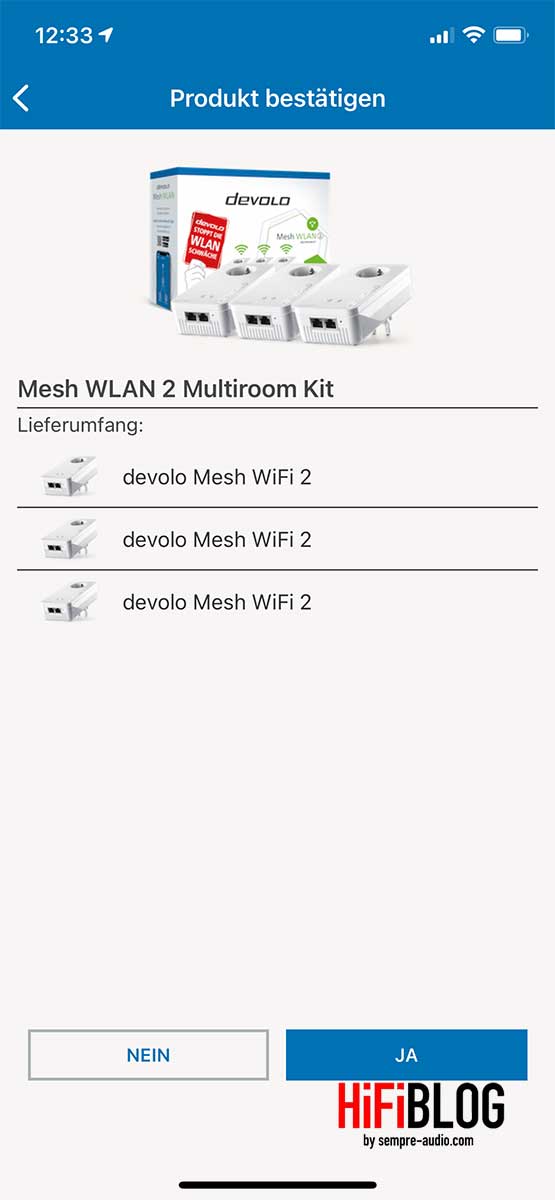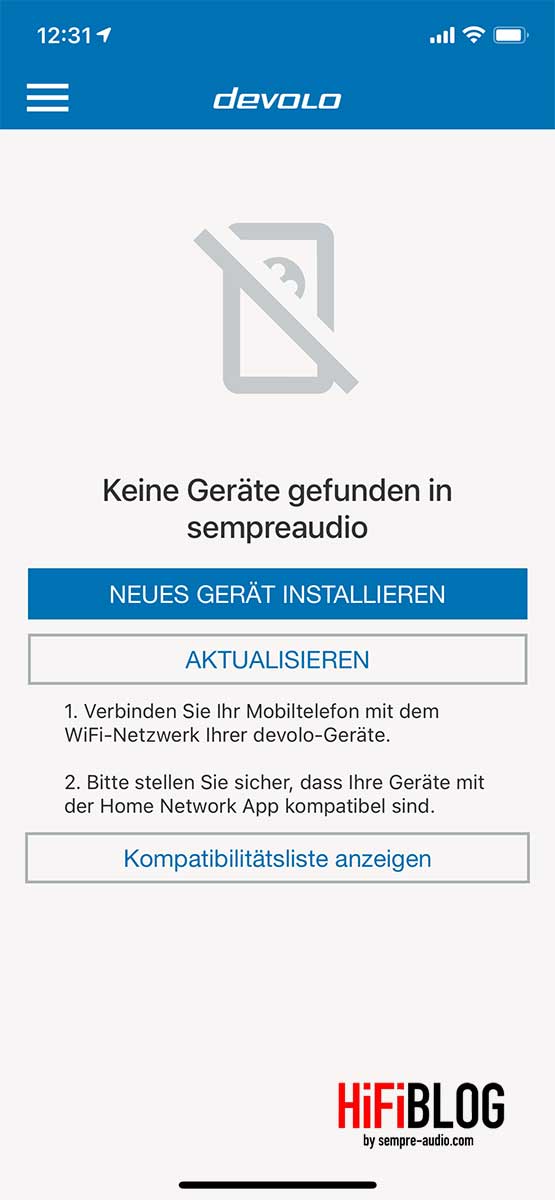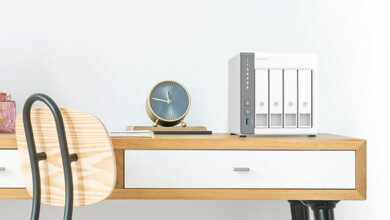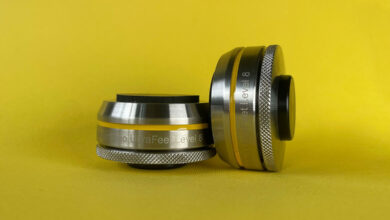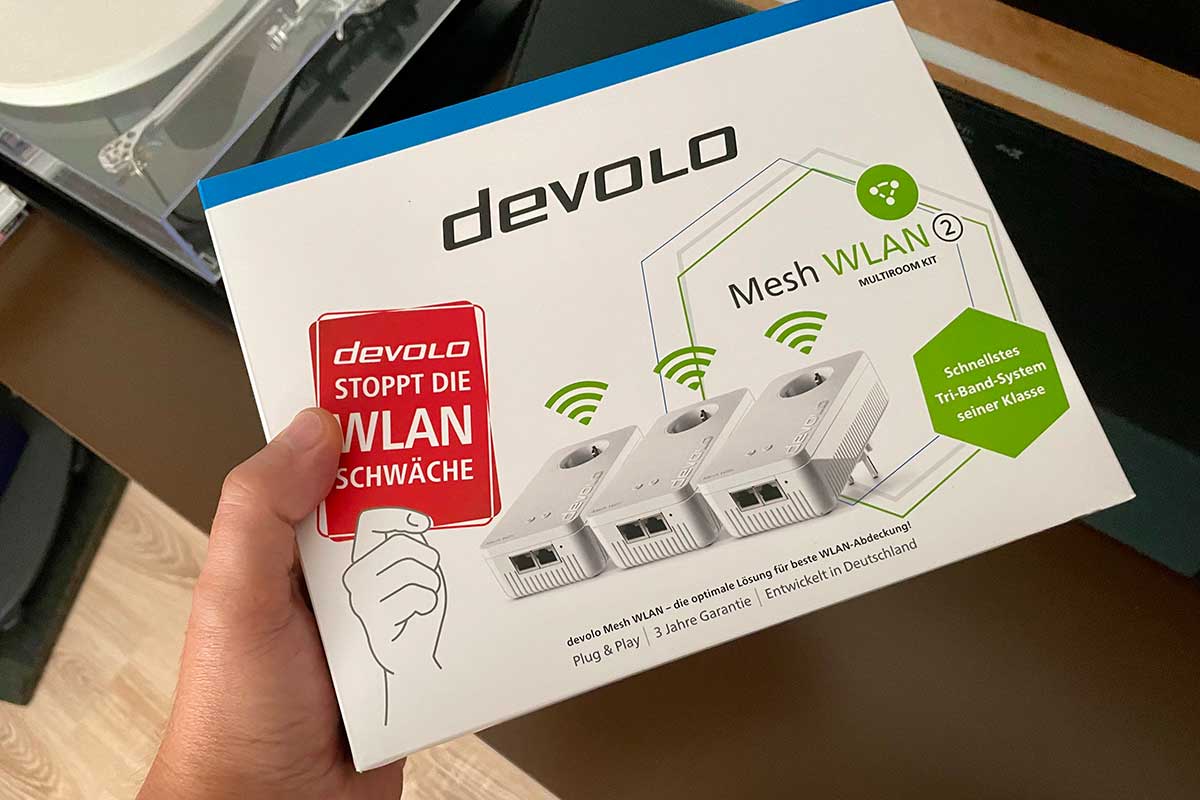
There are many ways to create a reliable network, but one particularly exciting one is powerline in combination with WLAN, as offered by devolo AG in the form of various products, including the devolo Mesh WLAN 2 Multiroom Kit.
The German company devolo AG, for example, advertises the devolo Mesh WLAN 2 Multiroom Kit as a complete package that makes it easy to set up a high-performance, reliable wireless network throughout the entire house.
We took a closer look at this solution, because a reliable, high-performance network is of course the decisive basis for actually being able to fully enjoy all the advantages of networked consumer electronics, including the Smart Home.
It doesn’t work without a network
Access to “data” has become an everyday occurrence for us, almost always and everywhere. Emails, websites, information of all kinds are constantly available to us, and we take it for granted that we always have direct access to music and videos and can play them back in many different ways.
Our world is “networked”, and this is especially true for the world of consumer electronics. TVs, audio systems, even smartphones and tablets, which have been an integral part of consumer electronics for years, everywhere “the network” is the basis.
This has become so self-evident that in many cases we no longer even think about where the content actually comes from, what infrastructure is required for it, but only until something doesn’t work as smoothly as it should…
When the network does not “play along
In principle, a network at home only works somehow in many cases, at least this is our personal experience in a private environment. Many users are satisfied with what they are given, and that is primarily the router of the internet provider.
The fact that these solutions are usually not the best of their kind should have been known for years; after all, they are quite cheap and often outdated models when they are delivered to the customer. And that is how they ultimately perform.
This has a particularly dramatic effect on the wireless network. The range of a rather mediocre router is rather limited anyway, and since we are dealing with models that are already many years old, they use outdated standards that are per se only sufficient for a very low performance and a very modest range in practice.
In addition, the router with integrated WiFi access point is naturally placed where the central supply line is, be it the telephone socket or the access point for the cable TV network. This place is only in the rarest of cases suitable to really optimally supply the entire flat, let alone an entire house. The coverage of the wireless network therefore sometimes not only has individual gaps, but often entire areas of the living environment are not covered at all with a reasonable wireless network.
Problems that could easily be solved
In our experience, many users prefer not to deal with the topic of “networking” because they think they simply do not know anything about this technology. As described, they simply accept it as it is…
Yet the market has long offered a multitude of solutions that would ultimately be perfect for precisely this target group, as they require no specialist knowledge, can be installed in just a few moments, and are also associated with a fairly low investment.
devolo AG with an extensive product range
One of these companies, which essentially specialises in exactly the field we are talking about, is devolo AG.
The German company sees itself as a network specialist with decades of experience in the professional environment, but also in the consumer segment. Here as well as there, the company has earned an impeccable reputation as an expert for so-called powerline solutions, a very special field of network technology.
Powerline – one of the most flexible network technologies
Powerline is a special technology that simply uses the existing electricity network in the house to set up a local network. In order to create a network throughout the entire house, it is not necessary to lay additional cables, but rather to build on the existing power lines, to put it very simply.
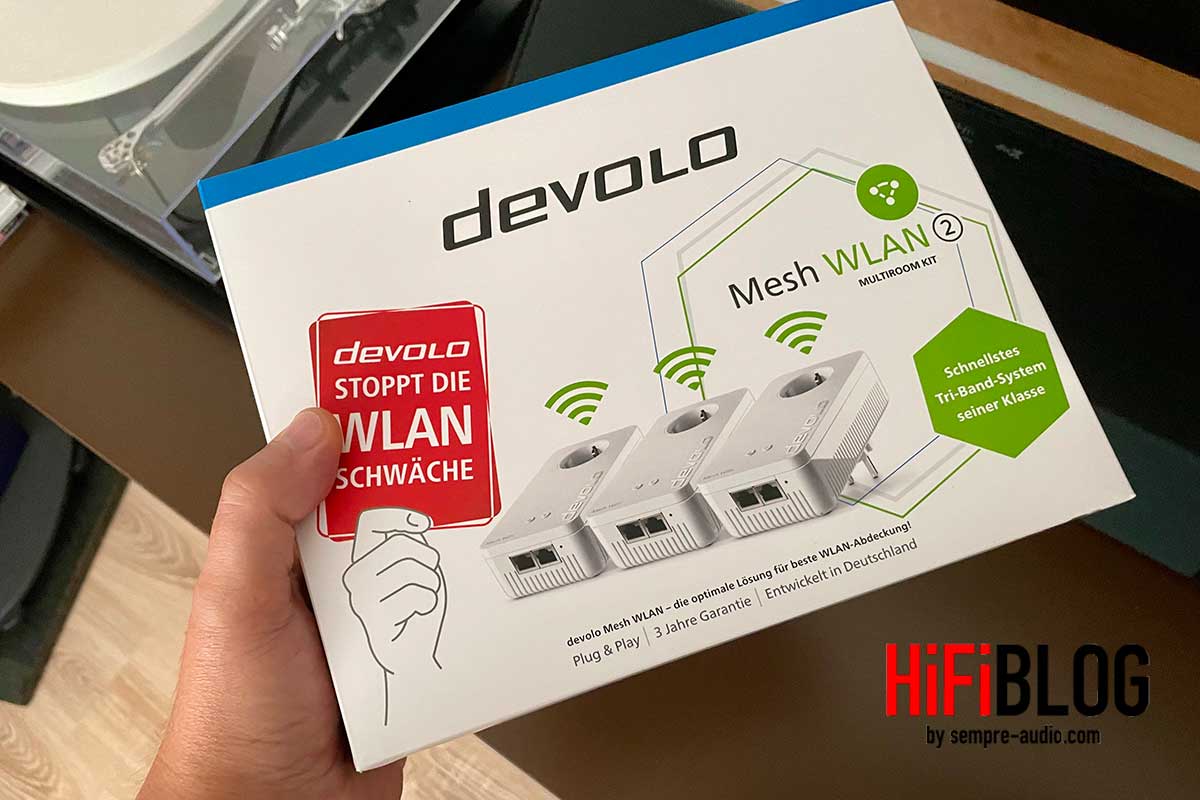
When the power supply network becomes a network…
This technology is often referred to as PowerLAN, PLC for Powerline Communication or dLAN (direct LAN), but in principle it is always the same. The existing power grid always becomes a network.
As already mentioned, this technology is by no means new; over many years it has been constantly optimised and improved. One of the driving forces behind this was the German company devolo AG.
Extensive product range
The product range of devolo AG is really impressive, ranging from “simple” solutions as the basis of a network to Smart Home systems. The great advantage for the customer is that most of the solutions from devolo AG can be combined with each other without any problems, so that the optimum products are available for almost every individual requirement.
Powerline – extremely simple installation
A very important aspect, however, is that absolutely no technical knowledge is required to install these solutions from devolo AG. The product range for consumers is designed in such a way that it can be put into operation by really anyone within a few moments.
To put it bluntly, these products not only look like a conventional power supply unit for any device, they are installed in exactly the same way. Just plug it into the socket and the job is almost done.
devolo AG deliberately tries to address customers on its Internet site in such a way that no hurdles are created. They don’t get bogged down in technical papers, but rather get to the heart of the matter as simply as possible, outline any problems related to inadequate network coverage and performance, and point out the appropriate solutions. Ultimately, the motto is to enable a seamless, high-performance network throughout the entire home.
devolo Mesh WLAN 2 Multiroom Kit
For this test, we have chosen a product that we believe provides the ideal basis for setting up a truly seamless network throughout the entire house, namely the devolo Mesh WLAN 2 Multiroom Kit.
The set consists of three identical adapters that can fulfil two tasks at once. On the one hand, of course, they serve to establish a so-called powerline network in the house. The really important thing, however, is that you can integrate solutions into the network in two different ways: firstly, quite simply via a network cable, but in addition, a wireless network is also set up, and each adapter serves to expand this wireless network.
MESH – Going into the network
In turn, a very special wireless network is set up, a so-called MESH WLAN.
MESH actually stands for network, but can also be understood as interlocking. In this case, each wireless LAN access point does not set up a separate wireless network, but rather each wireless LAN access point provides a shared WiFi network with others, to put it bluntly. Devices that are thus in the network are seamlessly taken over by all access points when you leave the range of one access point and come into the vicinity of another. Each additional wireless LAN access point can thus be used to expand the MESH or to close any gaps that may arise due to the respective structural conditions of the flat or house.
In principle, this works in the same way as we know it from mobile phones. Here, too, reception is not interrupted when you move from one radio cell to the next; rather, the mobile phone books itself out of one cell and seamlessly into the next. Even telephone calls can be continued without interruption. It is not for nothing that a MESH network is sometimes referred to as roaming, which is handled without any problems.




First step – Loading the devolo Home Network App
There are various ways to install the adapters of the devolo Mesh WLAN 2 Multiroom Kit, the simplest being via the devolo Home Network App, which is available for Apple iOS and Google Android.
This app first determines whether powerline adapters from devolo AG are already present in the network; if none are found, you can install new devices directly. That is what we want.
To do this, the app asks the user which device he wants to install, in our case three devolo MESH WLAN adapters. We could now select this, but it is even simpler if we simply scan the barcode on the kit’s packaging.
In one fell swoop, the app “knows” that we want to install a total of three powerline adapters with WiFi access points and lists them correctly.
Step by step to the goal – plugging in the adapters, connecting to the router
The app is designed in such a way that the user is guided step by step through the installation process.
First, you are asked to plug two of the adapters into sockets. By the way, the three adapters of the devolo Mesh WLAN 2 Multiroom Kit are completely identical, so it doesn’t matter where you insert which one.
To begin with, the adapters of the devolo Mesh WLAN 2 Multiroom Kit should ideally be plugged into the same room to make the installation process easier. You can also use a power strip, but only for this initial installation; we will go into more detail on this topic in a moment.
Within two minutes, you should also plug the last, third adapter into a power socket, in the immediate vicinity of the Internet provider’s central router.
Now the three adapters automatically establish a powerline connection.
The LEDs on the adapters flash for a while, and when the connection is established, the status LEDs light up constantly in white in the form of a small “house”.
The next step is to connect the last plugged-in adapter, i.e. the one next to the existing router, to the router using the network cable that comes with the devolo Mesh WLAN 2 Multiroom Kit.
Once this is also done, the app shows when all three adapters have successfully established a powerline connection, and a green tick appears behind each of the adapters.
The app then offers the option of giving each adapter an individual name, which should be based on the room in which it will ultimately be used. If you select an adapter here, its LED flashes, so you know which adapter you are currently editing in the app.
Setting up the WLAN
Now it’s time to set up the wireless network, whereby the app offers the option of referring to the existing wireless network. WPS, the so-called WiFi Protected Setup, is used for this. However, this requires that the existing router also supports this, usually indicated by a WPS button. Sometimes, however, this option can only be found in the setup menu of the router, and we actually want it to be particularly simple. Practically speaking, however, there is also the option of proceeding without WPS, in which case the app lists existing WiFi networks that you can connect to by simply entering your user name and password.
Well, that’s it, and the app switches to the overview of the three adapters that have just been installed, which expand the existing WiFi network from now on. This also lights up the second LEDs on each of the adapters, which symbolise the WiFi network.
Very important – firmware updates
But before you consider everything done, you should check one more important point, namely whether the firmware of the adapters is up to date. This is an essential question, because first and foremost it is not about any new functions that are added, but primarily about security. Manufacturers always provide the latest security patches with new firmware versions, so it is advisable to always be up to date.
To do this, switch to the corresponding menu item in the app and, especially during the first installation, you are guaranteed to be notified of new firmware versions that are ready for installation.
The corresponding update is then carried out automatically and after a few minutes you have actually reached your goal, the configuration is done for the time being.
Distributing the adapters in the house
Now it’s a matter of distributing the adapters in the house in the best possible way to actually guarantee a seamless, high-performance WLAN.
Here we now have to add a little technology. The devolo Mesh WLAN 2 Multiroom Kit comprises three powerline adapters, each of which has a wireless access point based on the current IEEE 802.11ac standard. Compared to most routers offered by Internet providers, this solution is in a completely different league; the manufacturer even refers to it as Gigabit WiFi. In the 2.4 GHz band, data rates of up to 300 Mbit/s are possible, in the 5 GHz band, data rates of up to 867 Mbit/s are to be achieved. Despite the compact dimensions, the developers have designed the antennas in the adapters to ensure the greatest possible coverage in the room.
The power supply network as a “backbone
If these are placed in the right places, nothing really stands in the way of a high-performance network throughout the entire house. Especially since the connection between the adapters themselves is not based on WiFi, but on the power grid, so you have – again, please forgive this “exaggeration” – a high-performance backbone, ultimately the power grid as the backbone for the WiFi network.
Of course, one adapter must remain next to the central router, the others are now distributed around the house at strategically placed points. Ideally, you should choose rooms where you are particularly dependent on a reliable network, such as the living room, unless the first adapter has already been used as a base, the study and the children’s room…
One thing is important to remember, however: the powerline adapters should be plugged directly into a power socket and not into a power strip. Although this was practical for the initial installation, the manufacturer explicitly states that it is not an ideal solution for long-term operation and should therefore be avoided at all costs.
In fact, however, it is not a problem anyway, because the powerline adapters do not block the socket. Each adapter has its own power socket, which is therefore still available for various devices. A power strip can then also be connected without any problems…
Not only WiFi
By the way, it is important to note once again that the devolo AG system is not limited to WiFi alone; each adapter has two Gigagbit Ethernet ports. This means that you can also connect devices directly, which is recommended for TV sets, Blu-ray players or streaming clients. Yes, even essential network components such as a NAS, i.e. a central storage solution, can be integrated into the network, for example in the study. The performance is always sufficient for this, after all, the powerline network is the basis for data transmission.
The topic of security
Of course, to emphasise this once again, the topic of security in the network is particularly important. We have already explained how essential it is to always keep the firmware of the components up to date. In addition, it is important to ensure that signal transmission is encrypted. In this regard, devolo AG uses the latest encryption standards WPA2/WPA3 and thus complies with the banking standard according to its own information. Ultimately, the user does not have to worry about this point either…
For those who want to know exactly…
So far, we have deliberately refrained from giving technical background information. After all, we are not really interested in what, why and how exactly it works, the main thing is that it works. In addition, the solutions from devolo AG are designed in such a way that the user is indifferent to what is happening in the background; the only thing that matters to him is the result, and that he can achieve it in the simplest possible way.
But those who really want to know exactly what is going on in their network, all those who want to configure the network individually, can of course do so at any time without any problems. And even in different ways.
The devolo Home Network app already mentioned provides a good basis for this, at least to get an overview of the network. Under “Settings”, you can activate an advanced mode here so that transmission rates are also displayed.
In addition, the manufacturer also offers the option of installing the devolo Cockpit software on a PC or Mac, which is also used for advanced configuration.
Here, for example, a parental lock can be activated or a guest network can be set up for visitors, so that they do not have to do without a network throughout the house, but cannot access the actual, sensitive network.
Most users, however, will be more pleased that they have ventured to expand and optimise their network, which is considered to be complex, and that they have been able to achieve significantly higher performance and further coverage with just a few simple steps.
Is there more to it?
In principle, it can be said that the devolo Mesh WLAN 2 Multiroom Kit we tested already represents a very good basis. Many users will even be satisfied with the somewhat smaller devolo Mesh WLAN 2 Starter Kit, which consists of two powerline adapters with WiFi access points.
However, those who are not satisfied even with a total of three adapters can of course upgrade the network at any time with additional devolo MESH WLAN units. Integration is then just as simple and quick as the initial installation.
Disclaimer on our own behalf
To all the network professionals who have read this so far and are perhaps a little upset that we haven’t described everything quite so technically precisely, here’s an express apology. It is not our intention to describe this solution to you, because you know exactly how it works.
With this test, we expressly want to address all those for whom the topic of networks is a great mystery and whom they therefore do not really dare to approach. We want to show them that there are solutions on the market that have been developed exactly for their needs, that are designed in such a way that really everyone can use them and that there is therefore no reason to settle for poor network performance.
Caution is advised on only one point
In the end, however, we have to mention one thing, especially in the field of hi-fi systems. There is one scenario where at least a little caution should be exercised, and that is in the case of power failures of all too sensitive devices in a hi-fi chain.
The test showed that there were no problems with any of the devices in our hi-fi chains, except for a tube-based phono preamplifier. Here, a sound-damaging interference was clearly noticeable, but we were able to counteract this by using one of the countless high-quality current filters available on the market.
Getting to the point
The devolo Mesh WLAN 2 Multiroom Kit is probably the simplest and ultimately also the most cost-effective option for establishing a high-performance, secure network throughout the home. The installation is so simple that you really don’t need to have any basic knowledge of network technology to achieve your goal in just a few minutes. At the same time, the system is designed to provide reliably high data rates and to allow flexible integration of a wide variety of consumer electronics solutions. Ultimately, we can give the devolo Mesh WLAN 2 Multiroom Kit a clear recommendation.

The devolo Mesh WLAN 2 Multiroom Kit is probably by far the easiest way to set up a network throughout your home that works reliably and quickly, requires no technical knowledge, and can be expanded at any time.
Positive
- Very simple installation
- Quickly installed
- high performance
- flexible to use
- flexibly expandable
- attractive price
Negative
- In the vicinity of sensitive preamplifiers or phono preamplifiers, there may be impairments
Conclusion
SOUND
DESIGN
HANDLING
PRICE/PERFORMANCE
Impressive
The devolo Mesh WLAN 2 Multiroom Kit provides the best conditions for a reliable network in the home. No cables, just the power grid is sufficient to establish a reliable network.




